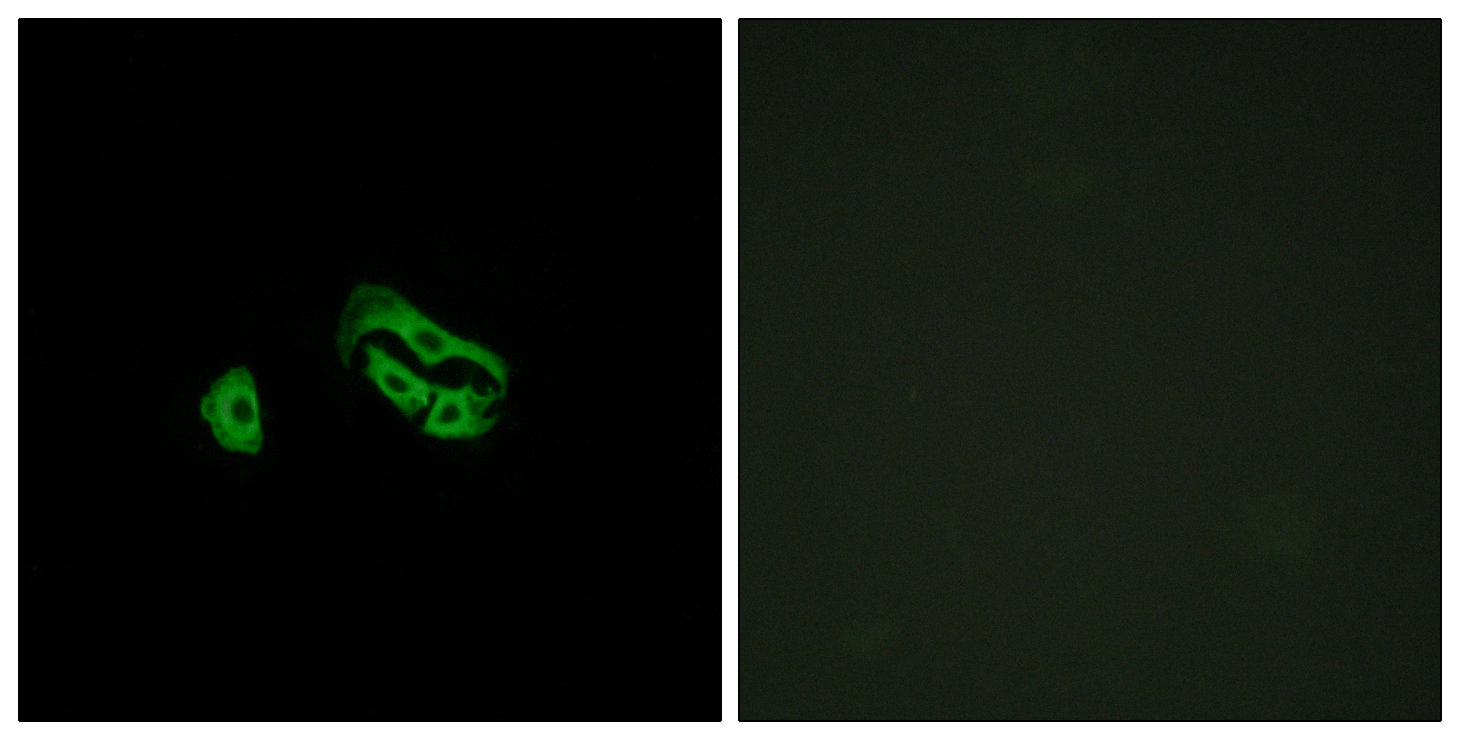FPRL2 Polyclonal Antibody
- Catalog No.:YT1771
- Applications:IF;ELISA
- Reactivity:Human;Rat;Mouse;
- Target:
- FPRL2
- Fields:
- >>Neuroactive ligand-receptor interaction;>>Neutrophil extracellular trap formation;>>Staphylococcus aureus infection
- Gene Name:
- FPR3
- Protein Name:
- N-formyl peptide receptor 3
- Human Gene Id:
- 2359
- Human Swiss Prot No:
- P25089
- Immunogen:
- The antiserum was produced against synthesized peptide derived from human FPRL2. AA range:304-353
- Specificity:
- FPRL2 Polyclonal Antibody detects endogenous levels of FPRL2 protein.
- Formulation:
- Liquid in PBS containing 50% glycerol, 0.5% BSA and 0.02% sodium azide.
- Source:
- Polyclonal, Rabbit,IgG
- Dilution:
- IF 1:200 - 1:1000. ELISA: 1:5000. Not yet tested in other applications.
- Purification:
- The antibody was affinity-purified from rabbit antiserum by affinity-chromatography using epitope-specific immunogen.
- Concentration:
- 1 mg/ml
- Storage Stability:
- -15°C to -25°C/1 year(Do not lower than -25°C)
- Other Name:
- FPR3;FPRH1;FPRL2;N-formyl peptide receptor 3;FMLP-related receptor II;FMLP-R-II;Formyl peptide receptor-like 2
- Molecular Weight(Da):
- 40kD
- Background:
- function:Low affinity receptor for N-formyl-methionyl peptides, which are powerful neutrophils chemotactic factors. Binding of FMLP to the receptor causes activation of neutrophils. This response is mediated via a G-protein that activates a phosphatidylinositol-calcium second messenger system.,similarity:Belongs to the G-protein coupled receptor 1 family.,
- Function:
- function:Low affinity receptor for N-formyl-methionyl peptides, which are powerful neutrophils chemotactic factors. Binding of FMLP to the receptor causes activation of neutrophils. This response is mediated via a G-protein that activates a phosphatidylinositol-calcium second messenger system.,similarity:Belongs to the G-protein coupled receptor 1 family.,
- Subcellular Location:
- Cell membrane; Multi-pass membrane protein.
- Expression:
- Detected in various tissues with highest expression in lung.
- June 19-2018
- WESTERN IMMUNOBLOTTING PROTOCOL
- June 19-2018
- IMMUNOHISTOCHEMISTRY-PARAFFIN PROTOCOL
- June 19-2018
- IMMUNOFLUORESCENCE PROTOCOL
- September 08-2020
- FLOW-CYTOMEYRT-PROTOCOL
- May 20-2022
- Cell-Based ELISA│解您多样本WB检测之困扰
- July 13-2018
- CELL-BASED-ELISA-PROTOCOL-FOR-ACETYL-PROTEIN
- July 13-2018
- CELL-BASED-ELISA-PROTOCOL-FOR-PHOSPHO-PROTEIN
- July 13-2018
- Antibody-FAQs
- Products Images

- Immunofluorescence analysis of HeLa cells, using FPRL2 Antibody. The picture on the right is blocked with the synthesized peptide.



